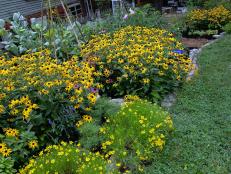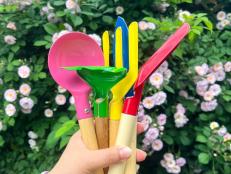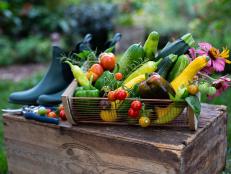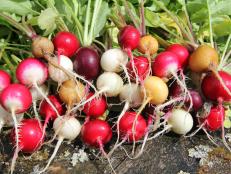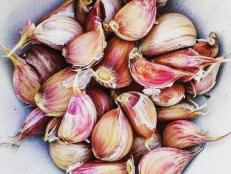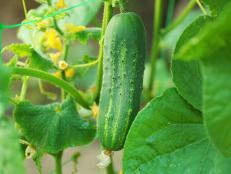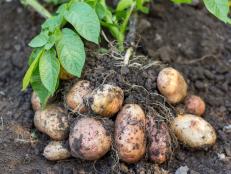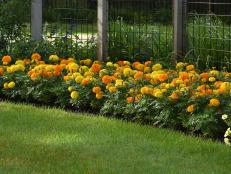Grow a Pizza Garden
Creating an Italian masterpiece is as simple as running out to the yard to pick fresh toppings for your pizza from a productive, pie-shaped bed.
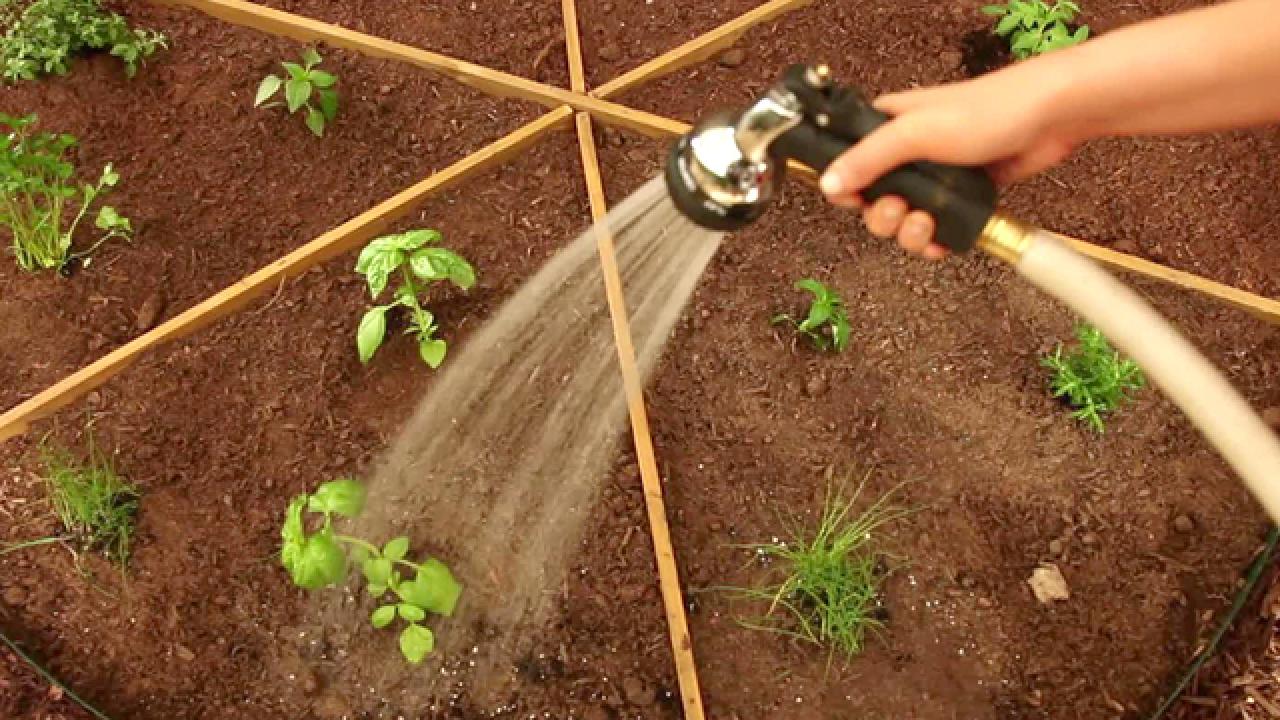
Materials Needed
- a sunny spot in the yard with well-drained soil
- edging for "pizza" outline (metal, plastic or wood)
- seedlings of your favorite toppings: tomato, bell pepper, chives (or onions), rosemary, basil, oregano, parsley
- compost
- water
Step 1: Choose the Size and Location of the Bed
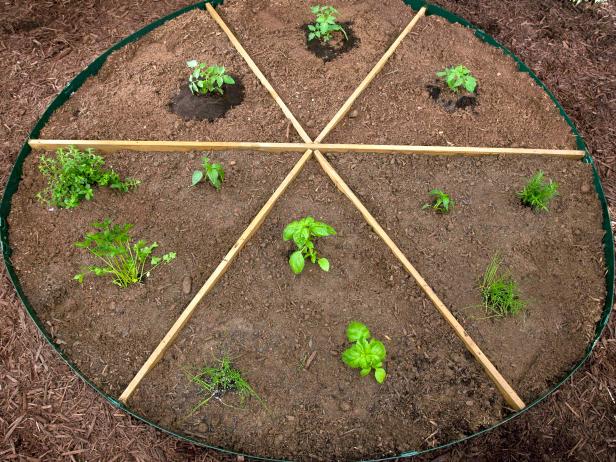
Choose a site that offers full sun. Decide how many of each kind of plant you want to grow, based on their spacing requirements (below), and outline a circular bed that will give each enough room. The bed created here is 8 feet in diameter.
Check the tag that comes with each transplant for specific guidelines. Here's a rough idea for how much space to allow for each plant:
Tomato: at least 2 feet; for larger varieties, 2-1/2 feet
Bell pepper: 12 to 15 inches
Onions: 4 to 5 inches apart
Basil, rosemary: 15 to 18 inches
Thyme, oregano: 10 to 12 inches
Step 2: Prepare the Soil and Install Edging
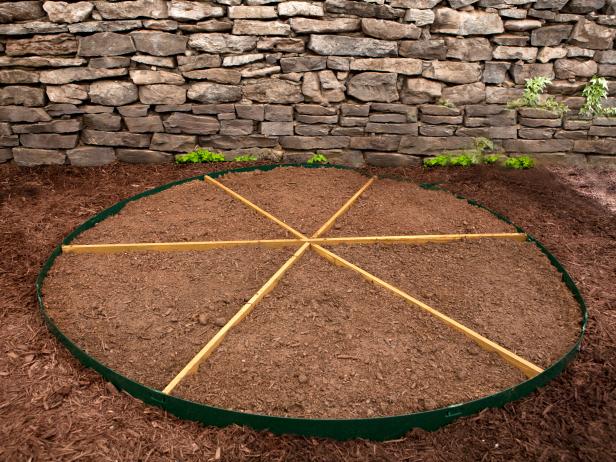
Remove weeds and dig in plenty of organic matter like finished compost. If your soil is very dense or hard clay, consider using a raised bed and fill it with a combination of bagged garden soil and compost.
A flexible metal or plastic edging works well for the outer edge. Wood pieces do fine to define the "slices" of the pizza.
Step 3: Place the Plants
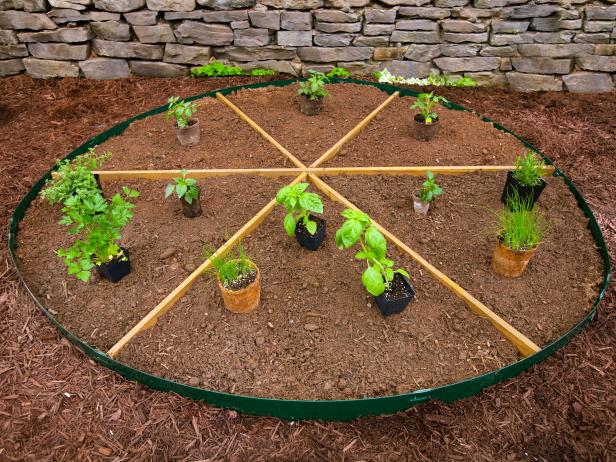
Give the tomato plants the most room. Here, we let them each have the entire "slice." Place up to three of the other plants in the rest of the sections.
Step 4: Start Planting
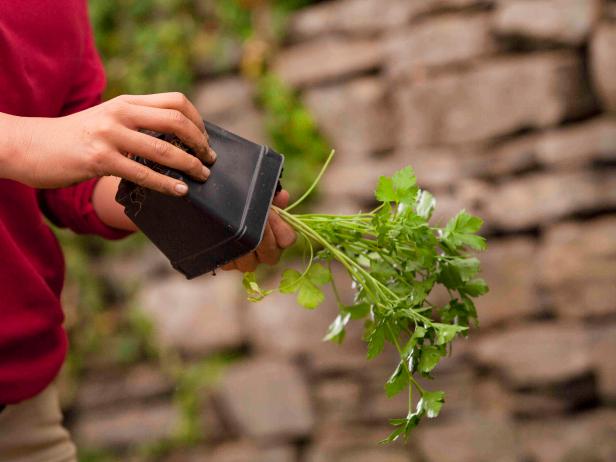
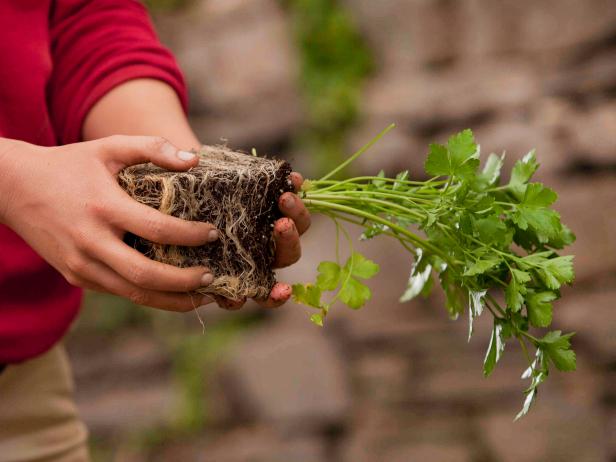
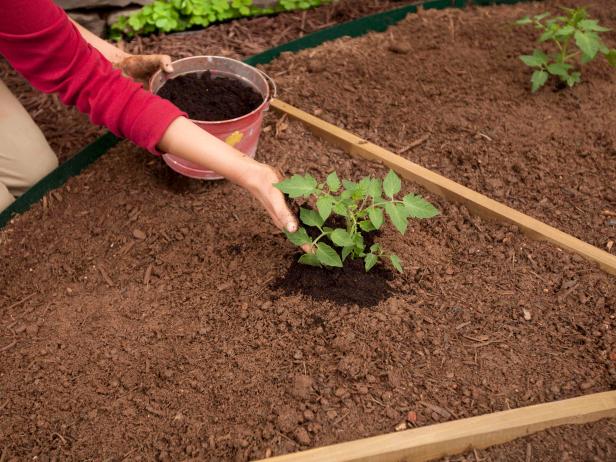
With one hand, gently grasp the main stems of each plant, and with the other hand, tip the container upside down and gently squeeze or shake the container until the plant is released. If the plant is root-bound, gently tease the outer roots apart. Plant the transplants at the same depth as they were in their containers, and firm the soil around the roots. Top-dress each plant with a handful or two of compost.
The exception to the planting-depth rule: Plant tomatoes a little deeper than they were in the pot, or better yet, if the main stem is still very flexible, bend it gently, lay the root ball on its side in the hole and also bury a bit of its stem, letting the stem curve upward till the rest of the plant is pointing straight up. Burying part of the stem in this way—sometimes called trenching—causes the plant to produce more roots and makes for a more vigorous plant.
Step 5: Water Your Pizza Garden
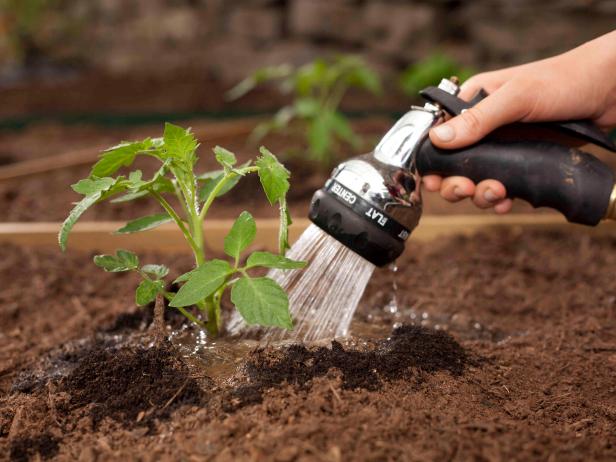
Water the plants and check back frequently to make sure that the plants receive adequate moisture. Tomatoes need more water than the other plants, followed by basil and peppers; rosemary and thyme will need less water. To reduce the chance of foliar diseases, water the base of tomato plants and avoid getting water on the leaves, especially if you're watering in the evening.
Step 6: Provide Support for the Tomato Plants
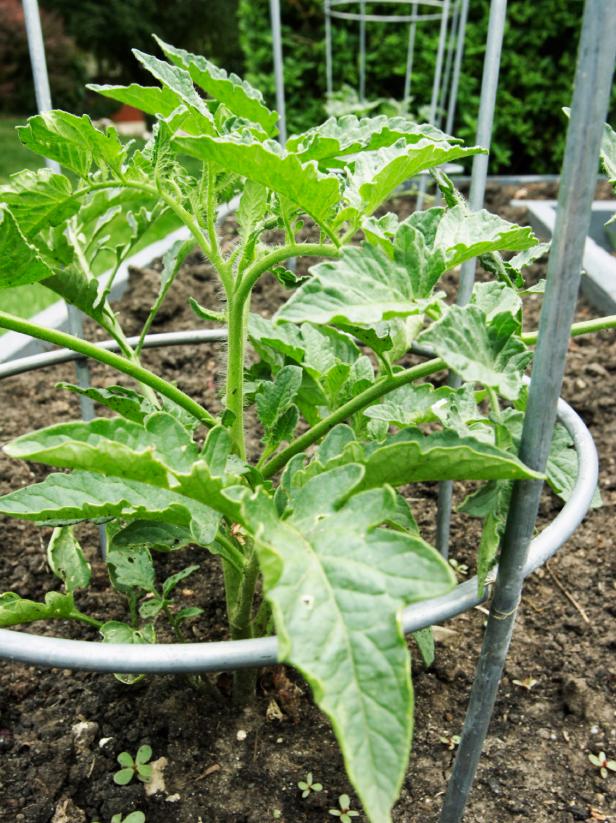
Image Courtesy of iStock
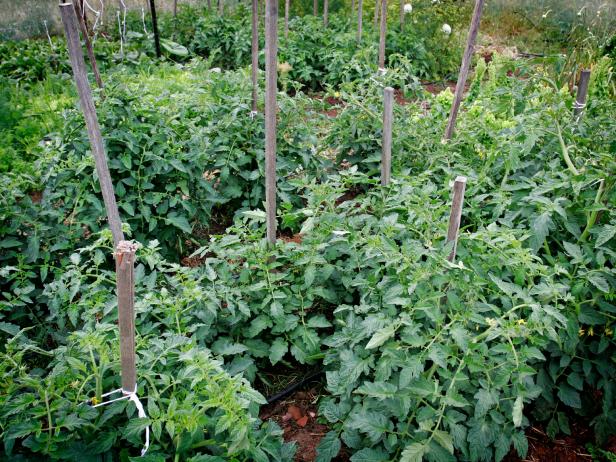
Image Courtesy of iStock
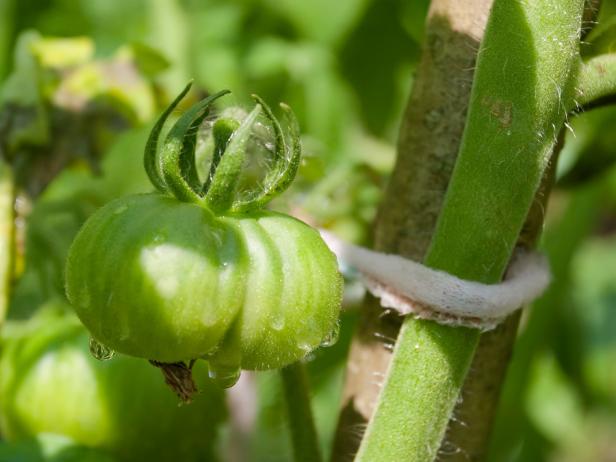
Image Courtesy of iStock
Your tomato plants will need some type of support; a cage or tying the stems to a wooden stake are two of the most common methods. As the plant grows, continue tying the main stems to the support.
Step 7: Got Small Space?
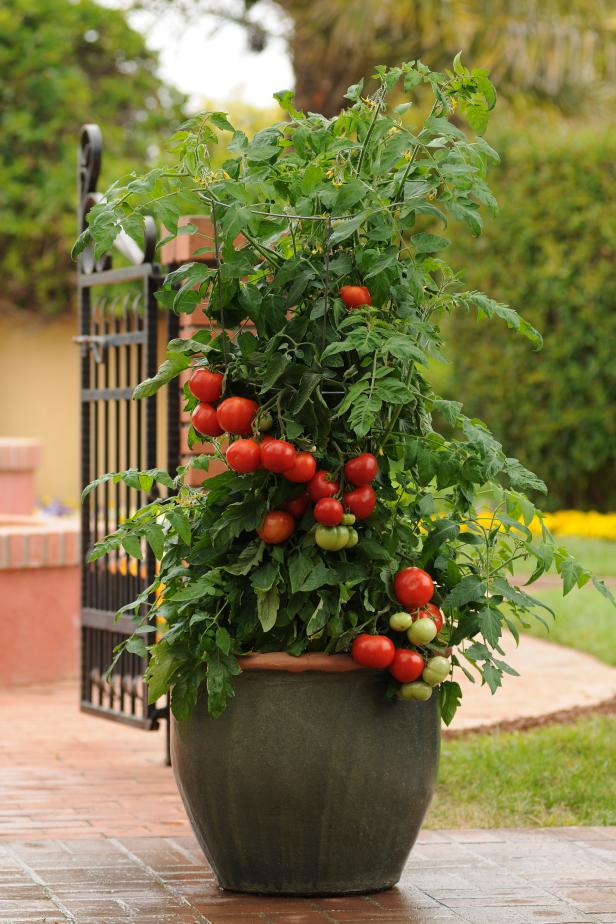
Image courtesy of PanAmerican Seed
Even if you don't have space for a large garden, you can plant your pizza garden in pots. For the largest plant, tomato, use a large planter or pot; an inexpensive equivalent would be a 5-gallon plastic bucket with several drainage holes in the bottom. You'll need to water a container pizza garden much more frequently than a garden in the ground—possibly up to twice a day, depending on your climate.
If you start your pizza garden with herb plants that are already a decent size when you purchase them, you can immediately begin to pick some basil leaves or cut sprigs of parsley, rosemary and oregano.






